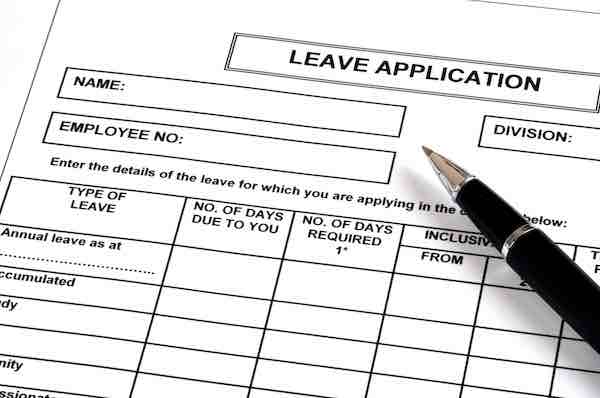The Comptroller General (CG), at least as early as 1974, stated that the term administrative leave “…while not officially recognized in legislation or executive regulation, is used to refer to an authorized absence from duty with pay and without charge to leave. Since there are no general OPM regulations covering administrative leave, each agency or department has the authority for determining the situations in which excusing employees from work without charge to leave is appropriate.” Some of the reasons for granting administrative leave were discussed in FPM Supplement 990-2, Book 630, Subchapter 11 and the CG’s decisions.
While no Government-wide guidance was available, the decisions made by the Comptroller General approved granting administrative leave for short periods of time while stating that an employee “…may not be placed on administrative leave with pay for an extended period.” (See Civilian Personnel Law Manual (CPLM), Title II – Leave; GAO/OGC-96-6 CPLM (1996); pages 5-1 – 5-4.)
More recently, the Government Accountability Office (GAO) reported that in a five year period from 2011-2015 the Department of Homeland Security had placed each of 116 employees on administrative leave for one year or more. The report estimated that the extended administrative leave had cost the Federal government about $19.8 million. (See Evaluation of DHS’s New Policy Can Help Identify Progress toward Reducing Leave Use, GAO 16-342, 23 March 2016.)
In order to establish guidelines for Federal agencies regarding the appropriate use of administrative leave, and to help improve tracking of the use of administrative leave the National Defense Authorization Act for Fiscal Year 2017, Public Law 114-328, at Section 1138, amends Subchapter II of chapter 63 of title 5, United States Code, to include three new sections that establish and describe three kinds of administrative leave.
This article will briefly describe these three new types of leave.
First Addition
The first addition to Chapter 63 establishes administrative leave by adding Section 6329a. This administrative leave may be granted for up to 10 days by a Federal agency, and will be used for the purposes and under the conditions to be established the U.S. Office of Personnel Management (OPM) no later than 19 September 2017. Generally, this will give agencies the authority to grant administrative leave for the short periods envisioned by the CG and the earlier FPM materials.
Second Addition
The second addition to Chapter 63 establishes investigative leave and notice leave by adding Section 6329b. The investigative leave is for use when an employee is under investigation. The notice leave is for use when an employee has been placed on notice of an impending adverse action. These two forms can be used independently or notice leave can follow a period of investigative leave if an adverse action is proposed at the conclusion of an investigation.
To use these forms of leave, the agency must determine that the employee’s continued presence may:
- Pose a threat to the employee or others;
- Result in the destruction of evidence relevant to an investigation;
- Result in loss of or damage to Government property; or
- Otherwise jeopardize legitimate Government interests.
The agency also must consider the following alternatives before using either investigative leave or notice leave:
- Assigning the employee to duties in which the employee no longer poses a threat described in the preceding paragraph;
- Allowing the employee to take another form of leave for which the employee is eligible, e.g., annual leave;
- Carrying the employee in absence without leave status (AWOL) if the employee is absent from duty without approved leave; and
- Curtailing the notice period for an employee subject to one if there is reasonable cause to believe the employee has committed a crime for which a sentence of imprisonment may be imposed; and find that none of these options is appropriate.
Generally, investigative leave may be granted for a period of 30 days, but extensions for up to 90 days are possible when approved by the agency’s Chief Human Capital Officer or his designee.
Extensions, in 30 day increments, beyond the 90 day total are possible if the agency submits a report to the Committee on Homeland Security and Governmental Affairs of the Senate and the Committee on Oversight and Government Reform of the House of Representatives, along with any other committees of jurisdiction. Notice leave will be granted only for the duration of the prescribed notice period. Here, too, OPM will issue regulations to guide agencies in utilizing investigative and notice leave by the September date mentioned above.
Third Addition
The third addition to Chapter 63 establishes weather and safety leave by adding Section 6329c. This form of leave may be granted when an employee or group of employees is prevented from safely traveling to or performing work at an approved location due to:
- An act of God;
- A terrorist attack; or
- Another condition that prevents safe travel or work performance.
Congress did not specify in the legislation the number of days that may be granted for weather and safety leave, but did require OPM to issue regulations regarding the conditions under which this form of leave will be used no later than 19 September 2017, also.
Until this legislation was passed in December 2016, agencies had great flexibility in granting administrative leave to Federal employees. This legislation will establish parameters within which agencies may grant the three forms of administrative leave Congress established, and will require monitoring and reporting on their use.
In establishing this legislation, the intent of Congress was to reduce what it sensed was the incorrect use of administrative leave and unnecessary expense to the Federal Government. Congress wants to encourage possible alternatives such as temporary reassignments and transfers of employees as well as to encourage expeditious investigations of employees placed on administrative leave.
Agencies should look to the September issuance of the regulations to assist them in applying the new provisions, and in establishing agency implementing policies and guidance.



